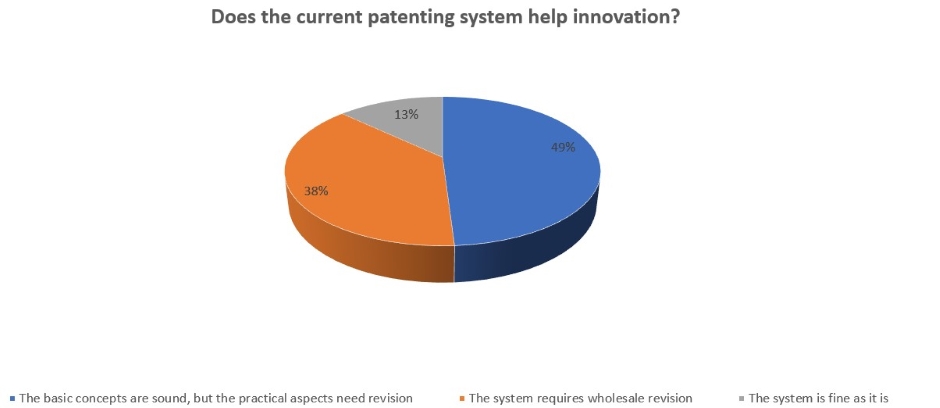
British innovators filed 5,736 patent applications at the EPO in 2018 and in 2017 22,072 applications were filed with the IPO and PCT.
Successful applications afford a license to the inventor, which then protects the idea from being copied for a period of time, but the practise has its detractors and patent disputes can take years to resolve.
EPO report shows why the future is patent pending
As noted last week, some believe that the patent system is as much a brake on innovation as an incentive for inventors whilst others see their first successful application as a key moment in developing their business.
Is the patent system fit for purpose, or does it need reforming? According to 49 per cent of poll respondents, the basic concepts are sound, but the practical aspects need revision, followed by 38 per cent who think the system needs wholesale revision. The remaining 14 per cent agreed that the system is fine as it is.
In the comments that followed, Helen Waugh said: “I manage patent portfolios and have worked in patents & innovation since leaving research. There is some truth to the statement that a patent is only worth having if you defend it, although I would debate that you need to defend it in 3 countries in order to demonstrate it’s worth. I would like there to be more grants available to fund patent costs for SMEs and lone inventors as patents can be very expensive indeed.”
Another reader speaking from experience was Ian Leppert, who said: “Patents are absolutely no use unless you have serious finances, time & commitment not only to ensure the patent(s) are as good as they can be, but to also monitor and enforce them. The Patent process also needs to be changed so that it gives the owner at least 5 years PROVISIONAL protection to allow them to ‘commercialise’ any products etc. It can take minimum 5 years just to get a working product finalised which uses up 25% of the Patent life. In addition, you can spend 3 years taking legal action (as I had to do) and a small fortune of your finances that robs Inventors like me of our ability to continue any form of R&D. I tried to introduce a number of new technologies into the Powertrain market and faced nothing but thieves and manipulators in my search for a reliable, honest, ethical partnership.”
Most of the remaining comments received so far reveal more negative experiences, but how had the patent system affected you? Let us know using Comments below, but familiarise yourselves with our guidelines for the content of comments before submitting.





Red Bull makes hydrogen fuel cell play with AVL
Formula 1 is an anachronistic anomaly where its only cutting edge is in engine development. The rules prohibit any real innovation and there would be...